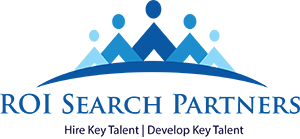After our early April roundtables, multiple clients requested another gathering to talk about “what’s next”. These roundtable sessions have been very enlightening. It’s encouraging to hear the sharing and support amongst dynamic HR leaders from the STL region, KC and Cleveland around various topics related to the COVID-19 pandemic.
Following are discussion highlights and some resources that might be helpful to you and your organization as you plan for re-entry, or consider longer term changes to how you do business.
Phased Re-entry Plans
Several companies have developed a phased approach for returning to work consisting of three to five phases, and many have incorporated employee feedback in this planning process.
Since many workspaces can only be at a certain % capacity initially, many of our clients are asking their employees in which phase they prefer to return. They are taking into account responses to survey questions around productivity, access, living situation, health concerns, impact to client experience, and more.
There was lively discussion around building entry/exit logistics and temperature taking, and how to track those employees who are returning on site. What makes this planning even more difficult is for those organizations who share space in a leased building with other tenants.
Some HR leaders are working with building management companies and vendors to provide temperature checks, while others are training staff to perform this task. Some have purchased kiosks for their facilities to handle this new safety precaution. A real challenge is maintaining individual privacy while ensuring safety of staff.
Many HR leaders shared that even with staff returning to the office, they will still restrict gathering in conference and lunchrooms, and have either marked spots or removed chairs in other spaces to support social distancing requirements.
Some companies that are considered essential businesses are continuing with an A/B team schedule to both contain spread should a team member test positive for COVID, and to meet the capacity guidelines set forth.
Overall, companies are being very thoughtful around how to comply with requirements, with a heightened awareness of employee needs.
Here is an article that we think really captures some of the big questions right now for bringing your employees back to work.
Some Surprises
Many people are more productive at home than leaders thought they would be, which has led to conversation about some teams working from home indefinitely. One organization shared that their digital strategy has accelerated by three years! Another HR leader shared that they are experiencing less distraction, and have now been able to implement changes that should have been implemented before. Many are wondering, should we continue to work remotely if productivity and engagement are up?
We did
hear from a few leaders that some strong performers are struggling for multiple
reasons; they may thrive in a more social type of work setting surrounded by
others, have challenges with their home/care situation or another personal
matter. Their leaders are addressing performance more from a care/concern
perspective to find out how they can offer the right type of support to meet
the employees’ needs.
Lastly, and maybe this one isn’t a surprise, and is an unfortunate issue in this environment. Some companies shared an increase in IT security concerns, and are thus putting additional protocols and communication in place to ensure their employees are extra cautious.
Support for leaders
One organization shared that initially they paused leadership development when the pandemic started, and then quickly realized the misstep. They recognized the need to help leaders understand how to manage and lead differently, and to maintain the employee experience virtually. Other HR leaders shared that they’re pushing out weekly messages and tips for leaders, as well as micro-learning on how to engage teams in a virtual environment.
Several client companies are setting the expectation for leaders to connect daily with their teams, asking “how are you doing?” and how they can help support them.
Changing how we lead is critical for “home working” to be successful. Here is an interesting article to support that shift.
Chapman and Co. Leadership Institute has also shared some excellent training to support leaders in creating a “change ready” culture during this time. You can find a re-play of their recent training “Rapidly Adapt to the Changing Game” here.
How to communicate suspended pay increases or bonuses
Some of our client’s annual pay increases were scheduled to occur over the past 2+ months, resulting in thoughtful discussion around how to communicate this to employees. Several HR leaders shared that they’ve been very transparent with employees in communicating that their current goals are to maximize employment, and they’ll reevaluate compensation components monthly. Overall, team members have been very understanding and grateful to remain employed.
Impact on sales roles
Many salespeople are chafing to be back in front of clients and prospects. Companies are training their salespeople to build relationships and educate clients by better leveraging social media and other virtual meeting platforms. This has been a huge shift for many sales team members who have had to learn virtual sales skills overnight. One organization shared that they have conducted 1:1 sessions with their sales team to help them feel more comfortable with using technology to build relationships.
Heightened awareness of employee needs and increased connection
Most organizations more keenly aware of employee’s needs and are offering more resources in the areas of well-being, encouraging them to leverage the employee assistance program (EAP) for themselves and their family members.
Organizations are offering training on resilience, and opportunities to connect with other team members on non-work topics to share struggles, recipes, children’s activities or just for fun!
We are hearing more open communication coming from leaders through weekly town halls where they answer tough questions from employees, with plans to continue this practice beyond the pandemic.
The use of Microsoft Teams and other digital platforms like Slack, Yammer and Bonfyre were topics of discussion with some organizations who went from no use to 100% use almost overnight. One HR leader shared that this crisis really forced their company into a digital space that their culture maybe wouldn’t have accepted previously. Another HR leader shared that she is seeing a marked increase of relationship building through these digital channels that she wouldn’t normally see before!
Oh, and our friend Deb Tallo from the Gateway Region YMCA encouraged us to check out the virtual workouts that are available 😊
What lies ahead…
We don’t have an answer for that one. What we do know is that it’s ok for HR and business leaders to not have all the answers because things are changing quickly and constantly. If you are communicating with your organization regularly, being open and honest with your communication, and remaining connected to your employees, you will be better positioned for any challenge that comes your way.
Our ROI team thanks all who joined us and contributed to last week’s dialogues. Special thanks to those who continue to ask us to gather HR leaders and facilitate the conversations. We love seeing the relationships that develop and continue outside of these sessions!
We are looking forward to continued sharing and dialogue, so stay tuned for an upcoming session.



Recent Comments